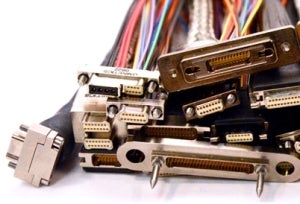
For years, standard D-sub-miniature connectors (MIL-DTL-24308) were the poster child in relation to overall ruggedness and reliability when it came to interconnect greatness.
However, much of this has changed with the influx of today’s digital explosion. These days designers are quickly realising how big of
an impact size and weight are playing within their design templates, despite its extensive track-record, this 0.100in pitch solution is no to fulfill today’s military or advanced electronics system specifications for weight and space.
In some instances this is also the case with Omnetics’ very own Micro D-sub connectors at 0.050in pitch per MIL-DTL-83513.
MIL-DTL-32139 is a new connector specification designed to meet the requirements for today’s demanding military environment.
These new Nanosized connectors, although small, must be even more rugged and reliable than connector options of years past, and Omnetics Nano-D connectors have proven to be a cut above the rest.
With precision gold plated, flex pin contacts on a nominal pitch of 0.64mm (0.025in), this family of Nano-miniature connectors is
ideal for mission critical applications ranging from Aerospace to down-hole drilling.
Omnetics Nano-D (Bi-Lobe®) is generally viewed militarily due in part to its overall ability to operate successfully under sinusoidal vibrations of ten to 2,000Hz at up to 20gs, withstand 48-hours of salt spray without exposure of base metals affecting the
connector’s performance, the ability to withstand 100gs of shock with no electrical discontinuity, not to mention the ability to operate at temperatures of -55°C to 200°C.
A number of non-military markets, such as robotics, are quickly reaping the benefits in which this small, yet powerful, connector family can offer.
Regardless of the industry, circuit boards themselves are evolving, and they are doing so faster with the intention of performing more and more functions, but on half the size of their previous footprint.
Meanwhile, the number of physical wires needed for data acquisition continues to rise, and as these data speeds increase, differential signal routing does as well, as do the number of drain wires necessary to facilitate the performance needed.
While this continues to be a design challenge for today’s designer, this growth in wire count can easily be solved using Omnetics’ Nano-D connectors wired in a format to account for these factors.

